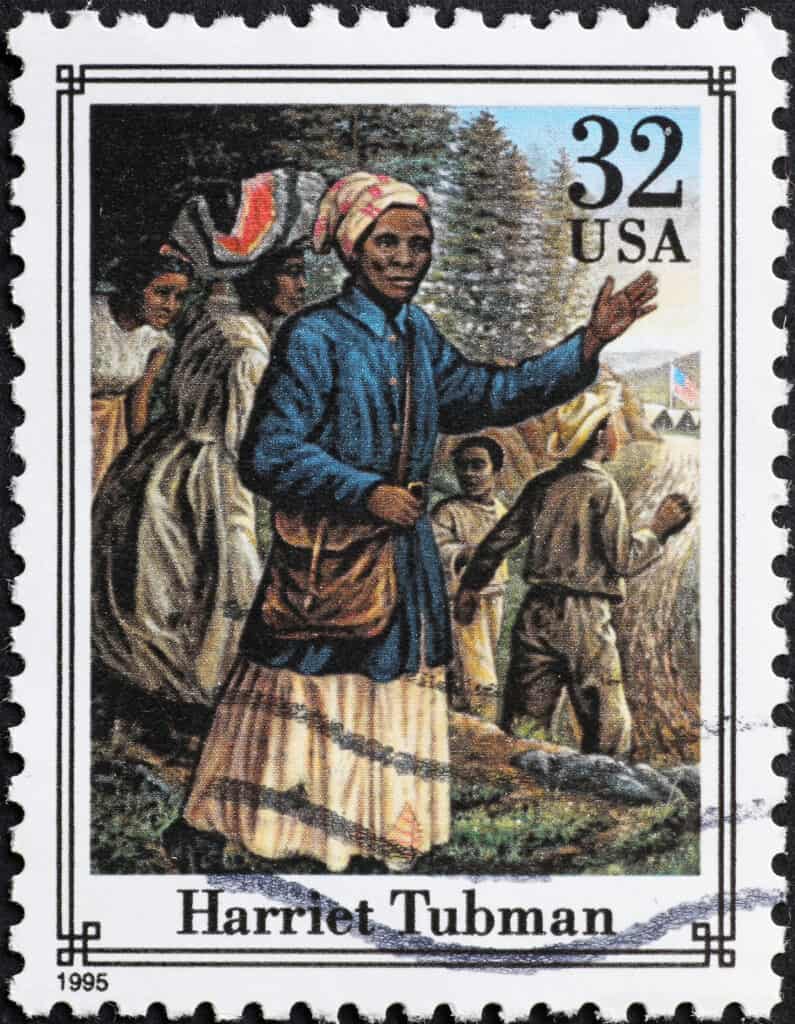Harriet Tubman is probably the most famous member of the underground railroad, but her life didn’t begin as a free woman.
Harriet Tubman grew up on a large plantation near the Blackwater River of the Madison area in Dorchester County, Maryland. She was born into slavery and spent her childhood as a slave along with her eight siblings and parents. This was until she escaped from slavery to Philadelphia, Pennsylvania around the age of 27.

You can read more below about Harriet Tubman’s early life as a slave, her family, and her escape from slavery.
Harriet Tubman’s Life As a Slave
Harriet Tubman was not born a free woman, she was born into slavery and was owned by Mary Pattison Brodess and Anthony Thompson, a married couple who ran a plantation.
Harriet’s name at birth was Araminta Ross and she was one of the middle children born to Ben Ross and Harriet Green. Her siblings were Linah, Mariah Ritty, Soph, Robert, Ben, Rachel, Henry, and Moses.
While growing up in the big family, Tubman would take care of her younger siblings which led to her working as a nurse for a white woman’s baby. Her job was to make sure that the baby didn’t cry and if it did she would be beaten.
Harriet was headstrong though which was partly inherited from her mother. At one point her mother stood up to plantation owner, Anthony Thompson, and refused to let him sell her youngest son.
After threatening to crack his skull open, Harriet Green was able to stay united with her son.
In defiance to her masters, Tubman often ran away for days on end and would wear thick clothing to lessen the impact of their whippings. While she began her work as a slave in the house doing domestic work, Harriet was eventually moved to the field due to a head injury.
Tubman received the head injury when she had gone on an errand to a dry goods store. At the store, a slave overseer was in the middle of a confrontation with an escaped slave.
As Sarah Hopkins Bradford wrote in her 1886 biography Harriet, the Moses of Her People (quoted by Folks Magazine), “The overseer caught up a two-pound weight from the counter and threw it at the fugitive, but it fell short and struck Harriet a stunning blow on the head. It was long before she recovered from this, and it has left her subject to a sort of stupor or lethargy at times…”
The brain injury resulted in her being sent to the fields to work. She also experienced frequent seizures thereafter and claimed to have visions of God.
You can watch the below video from Grunge which highlights key moments in Harriet Tubman’s life.
Tubman’s Family
As mentioned above, Harriet Tubman had a big family of eight brothers and sisters. Her mother was Harriet Green who went by the nickname Rit and her father was Ben Ross.
Rit worked as a cook and a maid in the Brodess family home while Ben was a field worker and later foreman on the Thompson plantation. At the age of 45, Ben was freed from slavery due to a manumit from his late owner.
A manumit was when a slave owner freed their slave. While there was a manumit with the same stipulations for Rit to be freed at age 45, her owners refused to free her which Tubman felt was a huge blow.
Sometime around 1944, Araminta Ross (Harriet Tubman) married a man named John Tubman who was a free black man. It was around this point that she changed her name to Harriet Tubman.
Though John was a free black man, he seemed to have no interest in freeing Harriet from slavery. When she escaped, he refused to join her despite her attempts to convince him and he eventually remarried another woman.
Harriet Tubman Escapes from Slavery
In 1849 when she heard that she was going to be sold and separated from her family, Harriet Tubman decided it was time to leave. She and her two brothers, Ben and Henry, fled for Pennsylvania.
However, while en route, Ben and Henry saw that their master was offering $100 each for their capture and turned around out of fear. Harriet went back with them but upon their safe return, she decided she could no longer live her life as a slave.
Tubman traveled through Maryland, Delaware, and Pennsylvania staying in underground railroad hideouts until she reached Philadelphia. She was now a free woman.